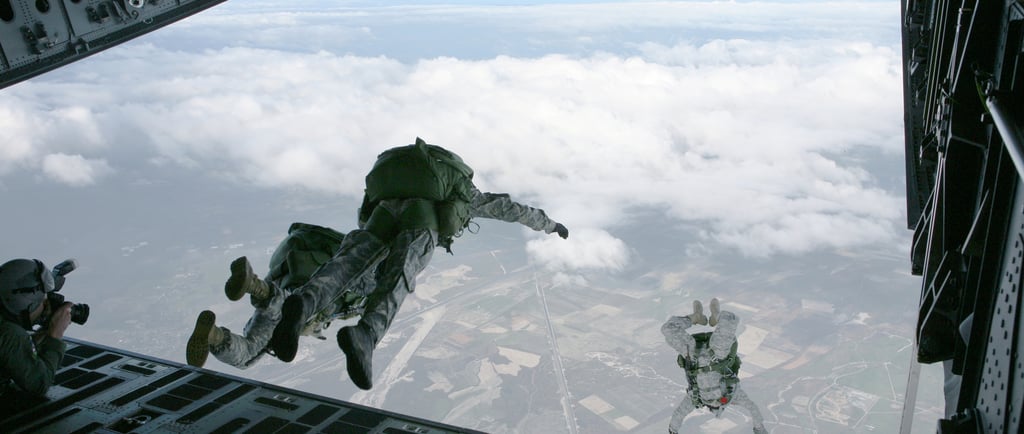U.S. Special Forces: The Elite Warriors of the Battlefield
When the most dangerous missions arise—ones that require stealth, precision, and unparalleled skill—the U.S. Special Forces are the first to answer the call. These elite warriors operate in the shadows, executing high-risk operations worldwide, from counterterrorism raids to hostage rescues and unconventional warfare. Whether it’s Navy SEALs, Green Berets, Army Rangers, Marine Raiders, or Air Force Special Tactics units, these highly trained forces are the tip of the spear in modern warfare.
Dr Edwards


The Origins of U.S. Special Forces
The U.S. military has always relied on elite units for specialized missions. During World War II, groups like the 1st Special Service Force (Devil’s Brigade) and Merrill’s Marauders pioneered modern special operations. However, it wasn’t until the Cold War that dedicated Special Operations Forces (SOF) were formally established to counter unconventional threats.
Today, U.S. Special Forces operate under the United States Special Operations Command (USSOCOM), executing missions across the globe. Their primary responsibilities include:
Counterterrorism – Hunting down terrorist leaders and dismantling extremist networks.
Unconventional Warfare – Training and leading foreign resistance movements.
Direct Action Missions – High-risk raids, sabotage, and strikes behind enemy lines.
Reconnaissance & Intelligence Gathering – Operating deep within hostile territory to gather critical information.
The Elite Units of U.S. Special Operations
Each branch of the U.S. military has its own elite units, each specializing in different types of operations:
Navy SEALs: Masters of Sea, Air, and Land
The Navy SEALs (Sea, Air, Land) are perhaps the most famous special operations force. Known for their grueling training (BUD/S) and legendary toughness, SEALs specialize in:
Maritime and underwater operations
Counterterrorism and hostage rescue
Covert reconnaissance and sabotage
SEAL Team 6 (DEVGRU) is the top-tier counterterrorism unit, responsible for missions like the raid that killed Osama bin Laden in 2011.
Army Green Berets: The Quiet Professionals
The U.S. Army Special Forces, known as Green Berets, specialize in unconventional warfare. Their missions often involve:
Training and leading foreign militias (as seen in Afghanistan and Iraq).
Counterinsurgency and psychological operations.
Deep reconnaissance and sabotage behind enemy lines.
Green Berets work in small, self-sufficient teams, using language skills and cultural expertise to embed themselves in foreign conflict zones.
Army Rangers: The Rapid Strike Force
The 75th Ranger Regiment is a light infantry special operations force that conducts:
Direct-action raids and airfield seizures.
Rapid deployment to conflict zones.
Supporting larger Special Forces operations.
Rangers have played a critical role in every major U.S. conflict, including spearheading the invasion of Panama (1989) and conducting high-risk missions in Iraq and Afghanistan.
Marine Raiders: The Marine Corps’ Elite Force
The Marine Forces Special Operations Command (MARSOC), also known as Marine Raiders, are the newest addition to SOCOM but trace their roots back to World War II’s Marine Raider battalions. Their expertise includes:
Special reconnaissance and raids.
Direct-action combat and counterinsurgency.
Foreign internal defense and training allied forces.
MARSOC units are often embedded with conventional Marine forces, enhancing their capabilities with elite training and tactics.
Air Force Special Tactics: The Battlefield Airmen
The U.S. Air Force contributes some of the most unique special operations personnel, including:
Pararescuemen (PJs) – Elite medics trained for combat rescue missions.
Combat Controllers (CCTs) – Experts in calling in airstrikes and directing battlefield air traffic.
Tactical Air Control Party (TACP) specialists – Coordinating air support for ground forces.
These highly trained airmen ensure that special forces teams always have air support and rapid extraction capabilities.
Training: The Toughest Selection in the Military
Becoming a Special Forces operator requires some of the most demanding training in the world. Each unit has its own grueling selection process:
Navy SEAL BUD/S – A brutal six-month course with Hell Week, where candidates endure extreme physical and mental challenges.
Green Beret Qualification Course (Q-Course) – A year-long training program focusing on unconventional warfare, survival, and leadership.
Ranger School – A physically and mentally exhausting 61-day combat leadership course.
MARSOC Assessment & Selection – A multi-phase test of endurance, problem-solving, and tactical skills.
Only a small percentage of those who attempt these courses ever succeed. The result? The most elite warriors on the planet.
Combat Successes: Missions That Changed History
U.S. Special Forces have been responsible for some of the most high-profile missions in history:
Operation Neptune Spear (2011) – SEAL Team 6’s raid on Osama bin Laden’s compound.
The Battle of Mogadishu (1993) – Army Rangers and Delta Force fought a desperate battle in Somalia (later depicted in Black Hawk Down).
Operation Red Wings (2005) – A SEAL mission in Afghanistan that inspired Lone Survivor.
Operation Gothic Serpent (1993) – The rescue of downed U.S. soldiers in Somalia, demonstrating the skill and resilience of special operations forces.
The Future of Special Operations
As warfare evolves, so do Special Forces. Future advancements include:
Increased use of AI and drones for reconnaissance and target acquisition.
Cyber warfare integration, with Special Forces supporting digital operations.
More joint-force operations, combining elite units from different branches for complex missions.
No matter how technology changes, the warrior mindset, elite training, and unmatched skill of U.S. Special Forces will remain their greatest asset.
Conclusion
The U.S. Special Forces are the most elite warriors in the world, capable of executing high-risk missions that no conventional force can handle. Whether fighting deep behind enemy lines, leading allied forces, or eliminating high-value targets, these operators embody precision, skill, and relentless determination.
When the U.S. military needs the best of the best, they turn to Special Forces—because failure is not an option.